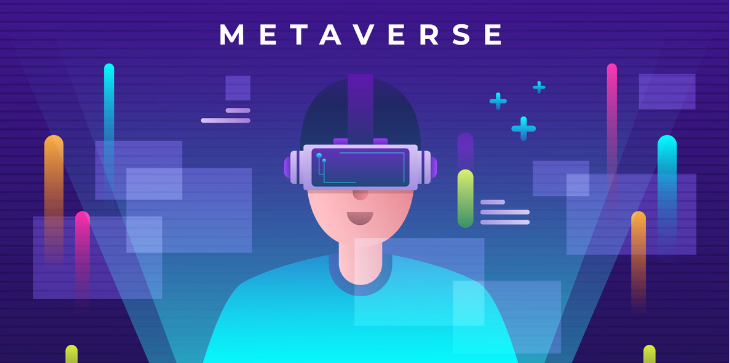The digital world is rapidly evolving, introducing new concepts that significantly change how humans interact with technology. Two key concepts at the forefront of this transformation are Metaverse and Spatial Computing. People often see the Metaverse as an immersive virtual world where users interact in a near-real digital space, while Spatial Computing enables computers to understand and respond to the physical environment more naturally. Together, they create deeper and more intuitive digital experiences.
In this article, we will explore the concepts of the Metaverse and Spatial Computing, their interconnection, and their impact on various industries and daily life.
What is the Metaverse?
The Metaverse is a virtual world created using digital technology, where users can interact with the digital environment and other users through avatars. While this concept is not entirely new, advancements in technology such as virtual reality (VR), augmented reality (AR), and blockchain have made it more feasible on a larger scale.
Key characteristics of the Metaverse include:

- Persistence – The Metaverse continues to exist and evolve regardless of user presence.
- Interconnectivity – Users can seamlessly transition from one digital world to another.
- Digital Economy – Transactions within the Metaverse are conducted using digital assets such as cryptocurrency and Non-Fungible Tokens (NFTs).
- Immersion – Utilizing VR and AR technology to create a more realistic experience.
- Social and Interactive – Users can communicate, work, play, and trade within this virtual world.
Major companies like Meta, Microsoft, and Nvidia are developing Metaverse platforms for diverse purposes, including gaming, social interaction, education, and business applications.
What is Spatial Computing?
Spatial Computing is a technology that helps computers understand and respond to the physical environment and human interactions in real-world settings. It includes technologies like 3D mapping, sensors, artificial intelligence (AI), and AR/VR devices that merge digital and physical experiences seamlessly.
Applications of Spatial Computing include:
- Augmented Reality (AR) – Enhancing the real world with digital elements, as seen in applications like Pokémon GO or AR devices like Microsoft HoloLens.
- Virtual Reality (VR) – Creating entirely digital environments that can be explored using VR headsets.
- Natural Interaction with Computers – Leveraging gesture, voice, and environmental recognition to make interactions with devices more intuitive.
- Robotics and Automation – Machines that can understand and adapt to their physical surroundings, such as autonomous vehicles or intelligent drones.
In essence, Spatial Computing serves as the foundational technology that makes the Metaverse more interactive and realistic.
The Connection Between the Metaverse and Spatial Computing
Metaverse and Spatial Computing complement each other in building a more advanced digital ecosystem. Users interact with the Metaverse more naturally through Spatial Computing, while Spatial Computing allows them to explore the digital world of the Metaverse.
Examples of their interconnection include:
- Digital Mapping and Virtual Environments – Spatial Computing is used to create realistic 3D models of the real world, which are then utilized in the Metaverse.
- Physical Interaction in a Digital World – Technologies such as motion recognition and haptics allow users to “touch” and “feel” objects in the Metaverse.
- Remote Conferencing and Collaboration – Combining the Metaverse and Spatial Computing enables virtual meetings to take place in realistic digital environments.
- Digital and Physical Commerce – Spatial Computing can be used to visualize products in the real world before purchasing them in the Metaverse.
Future Prospects
Despite its vast potential, the implementation of the Metaverse and Spatial Computing faces several challenges, such as:
- Technological Limitations
VR and AR devices remain expensive and need improvements in resolution, latency, and user comfort. - Privacy and Security Concerns
Data usage in these digital environments poses risks of privacy breaches and cybersecurity threats. - Regulatory and Legal Issues
Governments are working to regulate the Metaverse, focusing on digital economies, virtual asset ownership, and cybersecurity challenges. - Societal Adoption
While fascinating, not everyone is ready to transition into a fully digital world, particularly those unfamiliar with these technologies.
However, with continuous technological advancements, many of these challenges are expected to be overcome in the coming years.
The Metaverse and Spatial Computing are two revolutionary concepts that are transforming how humans interact with technology. By enabling more immersive and natural digital experiences, they hold immense potential across various sectors, from business to entertainment.
Although there are challenges to address, the future of the Metaverse and Spatial Computing looks promising. As technology continues to advance, we can expect increasingly realistic digital experiences, unlocking new opportunities for individuals and businesses worldwide.





